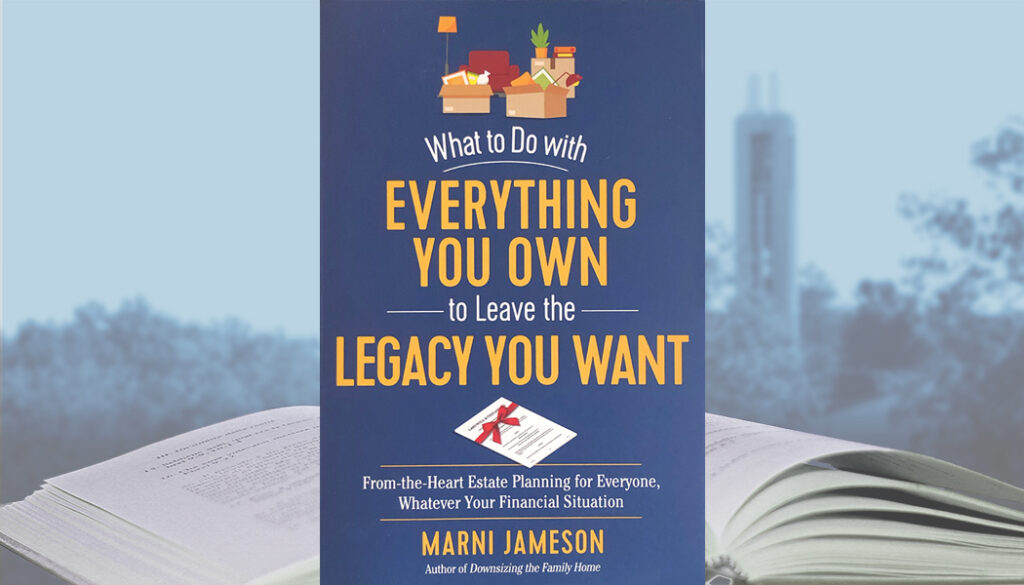Straight talk
Estate-planning fundamentals for those who need it—and we all need it

Marni Jameson, a Florida-based author and syndicated home and lifestyle columnist, opens her sixth book, touted as an easily accessible treatise on estate planning, by sharing her childhood notion that only one in 10 people “really died.” As she grew wiser, she expanded her estimate to four out of 10, “but no one in my family would.” Then seven out of 10, “but certainly not me.”
Jameson’s gentle introduction, a reminder of our collective denials about the realities of death, then pushes straight into the pandemic, when death could no longer be ignored.
“I figured that as long as we all had death and dying on our minds,” writes Jameson, j’81, “I might as well do something productive about it.”
Jameson spent her year of isolation writing What to Do with Everything You Own to Leave the Legacy You Want, which delves into such fundamental topics as drawing up wills and trusts, charitable giving, tax liabilities and how to select estate planners and trustees, but also topics unexpected yet entirely worthwhile: prenuptial agreements, disposing of art and jewelry, sharing inheritances with blended families, clearing homes of clutter, even advice—with three experts sharing different opinions—on what to do with framed diplomas and certificates once cherished by a late spouse.
“Life is not one big contest to see how much you can accumulate—but a peek inside some American homes would have you think so,” Jameson writes. “Edit your belongings as you live.”
Though other books on the topic have gained global popularity, it seems unlikely that any could be more valuable, or better informed, than What to Do with Everything You Own. Drawing on foundational concepts of her expertise in household organization, Jameson’s writing style is—probably just like her home—crisp and clean.
She shares advice and concepts gathered from experts around the country and worthy anecdotes from pop culture. (Admire the musician, but do not emulate Prince’s estate planning.) Important terms, highlighted throughout in boldface, are gathered and defined in a glossary (helpfully placed near the middle of the book, rather than shoved off to the end), and an appendix includes prep lists for meeting with financial advisers, forms for asset inventories and household bills, and even space for guided personal reflection.
Slim, stylish and—free of jargon and kitschy catchphrases—delightful to read, What to Do with Everything You Own has the feel of a book that will survive every household purge, consulted repeatedly over the years and almost certainly purchased for siblings and children.
“Regardless of how you want the chips to fall when you’re gone,” writes Jameson, “one thing is for sure—they won’t go where you want them to unless you plan.”
What to Do with Everything You Own is the perfect place to start.
What to Do with Everything You Own to Leave the Legacy You Want
By Marni Jameson
The Experiment, $16.95








